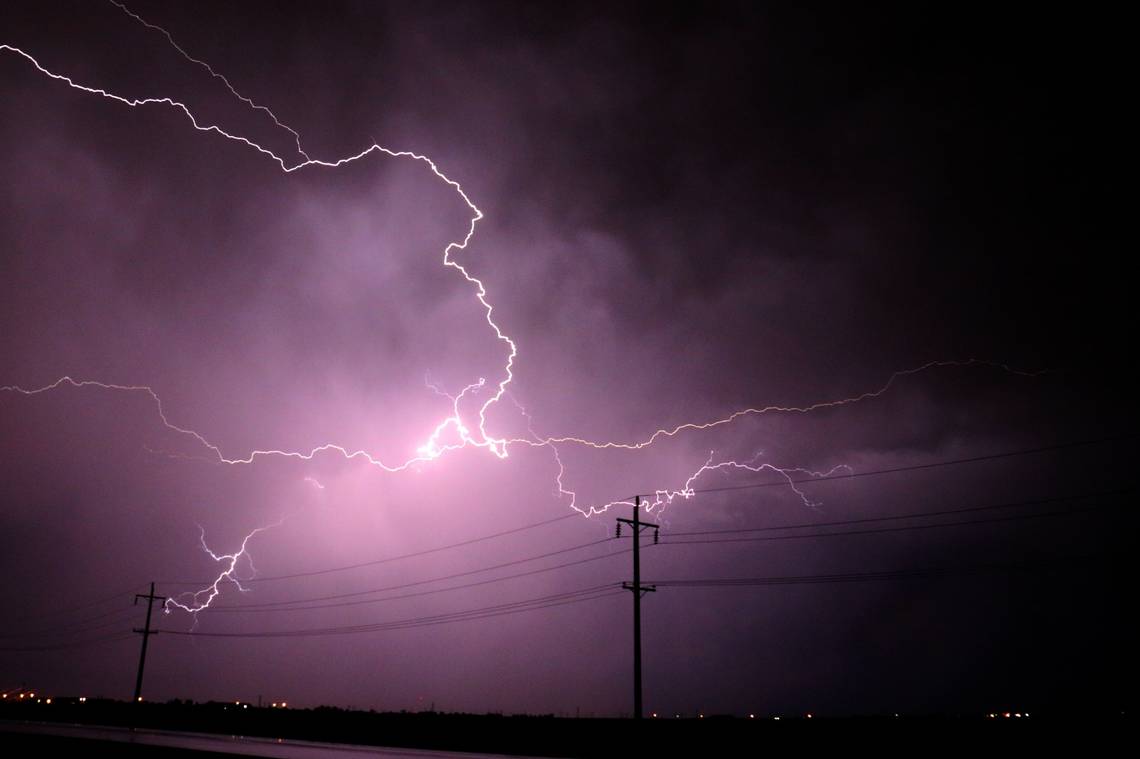A weather alert issued by the NWS Fort Worth TX on Sunday at 1:20 a.m. is warning residents of strong thunderstorms until 2 a.m. The alert is for Montague, Cooke and Wise counties.
Wind gusts of up to 50 mph and marble-sized hail (0.5 inches) are expected.
“At 1:19 a.m., Doppler radar tracked strong thunderstorms along a line extending from near Lake Nocona to near Lake Bridgeport. Movement was east at 45 mph,” says the NWS. “Gusty winds could knock down tree limbs and blow around unsecured objects. Minor damage to outdoor objects is possible.”
Expect strong thunderstorms in the following locations:
• Bridgeport, Alvord, St. Jo, Chico, Sunset, and Lake Bridgeport around 1:25 a.m.
• Lake Muenster around 1:30 a.m.
• Decatur and Muenster around 1:35 a.m.
• Hubert H Moss Lake around 1:40 a.m.
Other impacted locations include Rosston, Cottondale, Bulcher, Park Springs, Capps Corner, Crafton, Nocona Hills, Boonsville, Hood and Myra.
The NWS adds, “These storms may intensify, so be certain to monitor local radio stations and available television stations for additional information and possible warnings from the National Weather Service. A Tornado Watch also remains in effect until 7 a.m. for north central Texas.”
This alert is in effect until 2 a.m.
How to react when facing a lightning hazard?
Around 25 million lightning strikes occur in the United States every year, with most taking place during the summer months. The NWS reports that these strikes result in about 20 fatalities annually. The probability of lightning strikes rises as a thunderstorm approaches and peaks when the storm is directly above. As the storm moves away, this likelihood decreases.
Here are tips on how to stay safe during a thunderstorm:
• To lower the risk of lightning strikes, when going outdoors, develop a plan to reach a safer spot.
• If the sky becomes menacing and thunder becomes audible, seek out a safe place to seek shelter.
• Once inside, avoid contact with corded phones, electrical equipment, plumbing, and windows and doors.
• Wait for 30 minutes after the final lightning or thunder before heading outside again.
If finding indoor shelter is not an option:
• Stay away from open fields, hill summits, or ridge tops.
• Keep a distance from tall, solitary trees or other elevated structures. When in a forest, stay in proximity to shorter tree groupings.
• If you are with a group, fan out to stop the current from transmitting between members.
• If you are camping in an open area, set up camp in a valley, ravine, or other low area. Remember, a tent offers no protection from lighting.
• Maintain a safe distance from water, wet items, and metal objects. Water and metal do not attract lightning, yet they conduct electricity efficiently.
What to do in the rain on the road?
• Switch on headlights — Even during daylight hours, using headlights can enhance visibility and signal your presence to other drivers.
• On the road — Drive in the middle lanes and stay on high ground. Rainwater tends to stockpile on the edges of roads.
• Steer clear of puddles — Driving into puddles or low areas of rainwater can cause vehicles to hydroplane or skid out of control.
• Do not follow large vehicles closely — Large vehicles like trucks or buses can create a spray of water that can reduce your visibility.
• Avoid flooded areas — When encountering a flooded road, do a U-turn and head back. The strong currents from flash floods can pull drivers off roadways. Driving through deep water can also negatively affect a vehicle’s mechanical and electrical systems.
What is hydroplaning?
Hydroplaning happens when a vehicle starts sliding uncontrollably on wet roads.
This happens when water in front of the tire builds up faster than the vehicle’s weight can push water out of the way. The water pressure then causes the vehicle to rise and slide on a thin layer of water between the tires and the road, making the driver lose control. Hydroplaning is primarily caused by three factors:
1. Vehicle speed — When a vehicle’s speed increases, the tire-traction grip and ability to control the vehicle decreases. Drive at a reduced speed during wet weather.
2. Water depth — The deeper the water, the sooner a vehicle loses traction on the road. It doesn’t matter how deep the water is, even a thin layer can lead to hydroplaning.
3. Tire tread depth — Checking your tire tread before hitting the road is important, as low or no tread can lead to sliding.
In the event of your vehicle hydroplaning, here’s what to know:
• Ease off the accelerator — Step off the gas to slow down the vehicle until the tires find traction.
• Turn into the skid — Turning into the skid can help the vehicle’s tires realign to regain control.
• Make sure the tires reconnect with the road — During the skid, wait until the tires reconnect with the road and then gently straighten the wheels to regain control.
• Brake gently as needed — Brake normally if the vehicle has anti-lock brakes and pump brakes gently if in an older vehicle.
Source: The National Weather Service
